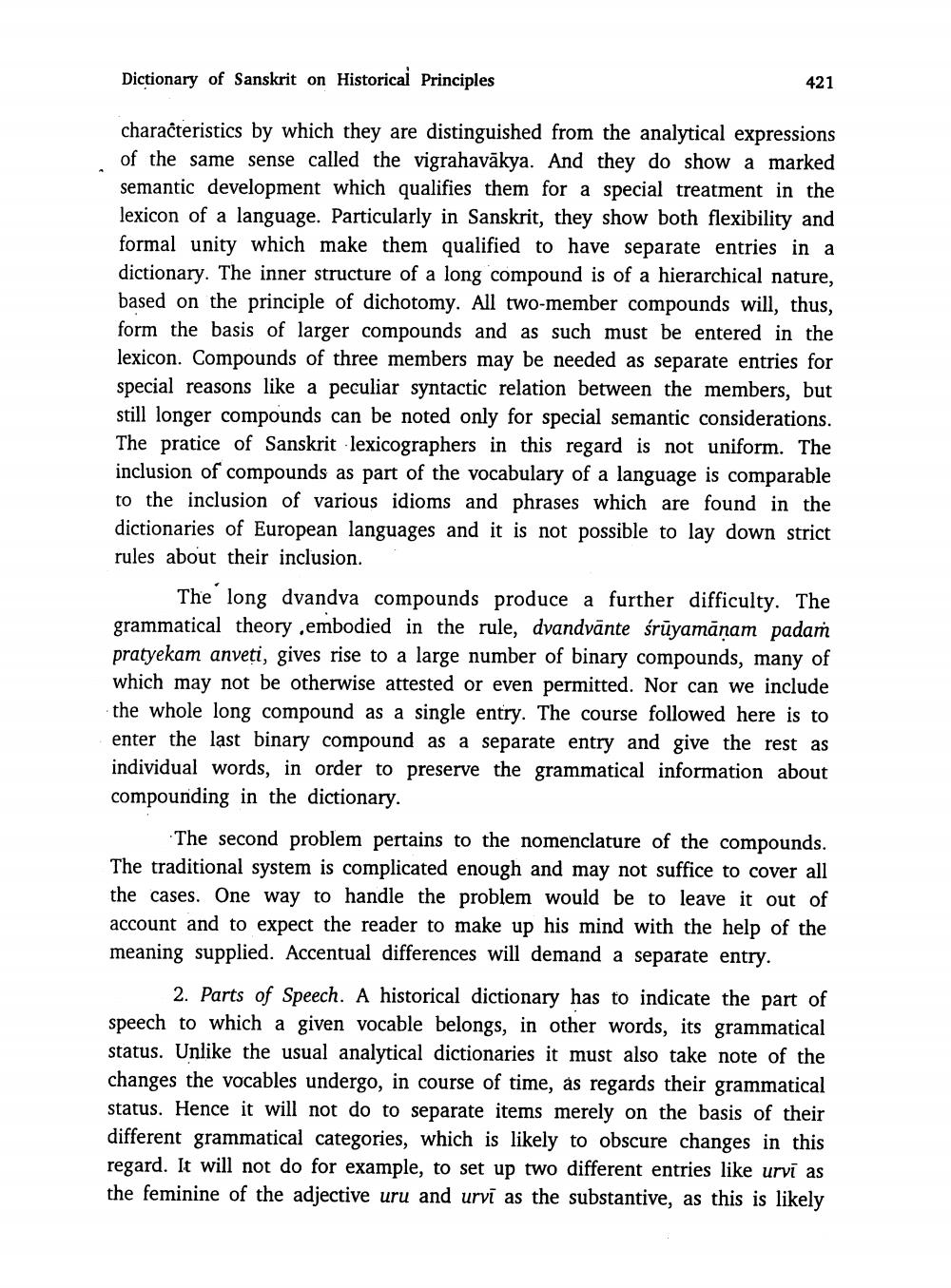________________
Dictionary of Sanskrit on Historical Principles
421
characteristics by which they are distinguished from the analytical expressions of the same sense called the vigrahavākya. And they do show a marked semantic development which qualifies them for a special treatment in the lexicon of a language. Particularly in Sanskrit, they show both flexibility and formal unity which make them qualified to have separate entries in a dictionary. The inner structure of a long compound is of a hierarchical nature, based on the principle of dichotomy. All two-member compounds will, thus, form the basis of larger compounds and as such must be entered in the lexicon. Compounds of three members may be needed as separate entries for special reasons like a peculiar syntactic relation between the members, but still longer compounds can be noted only for special semantic considerations. The pratice of Sanskrit · lexicographers in this regard is not uniform. The inclusion of compounds as part of the vocabulary of a language is comparable to the inclusion of various idioms and phrases which are found in the dictionaries of European languages and it is not possible to lay down strict rules about their inclusion.
The long dvandva compounds produce a further difficulty. The grammatical theory .embodied in the rule, dvandvānte śrūyamānam padam pratyekam anveti, gives rise to a large number of binary compounds, many of which may not be otherwise attested or even permitted. Nor can we include the whole long compound as a single entry. The course followed here is to enter the last binary compound as a separate entry and give the rest as individual words, in order to preserve the grammatical information about compounding in the dictionary
The second problem pertains to the nomenclature of the compounds. The traditional system is complicated enough and may not suffice to cover all the cases. One way to handle the problem would be to leave it out of account and to expect the reader to make up his mind with the help of the meaning supplied. Accentual differences will demand a separate entry.
2. Parts of Speech. A historical dictionary has to indicate the part of speech to which a given vocable belongs, in other words, its grammatical status. Unlike the usual analytical dictionaries it must also take note of the changes the vocables undergo, in course of time, às regards their grammatical status. Hence it will not do to separate items merely on the basis of their different grammatical categories, which is likely to obscure changes in this regard. It will not do for example, to set up two different entries like urvi as the feminine of the adjective uru and urvī as the substantive, as this is likely




